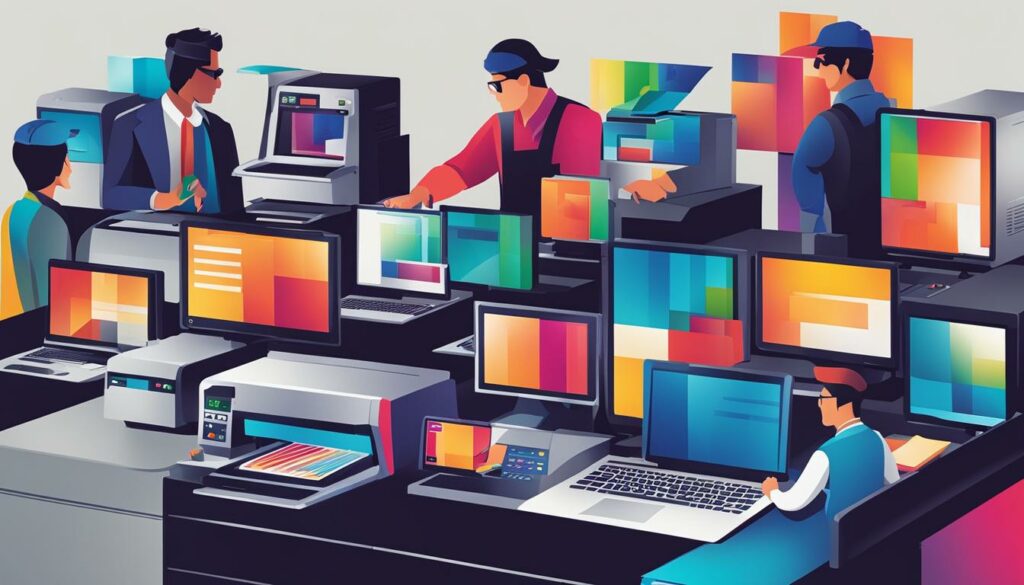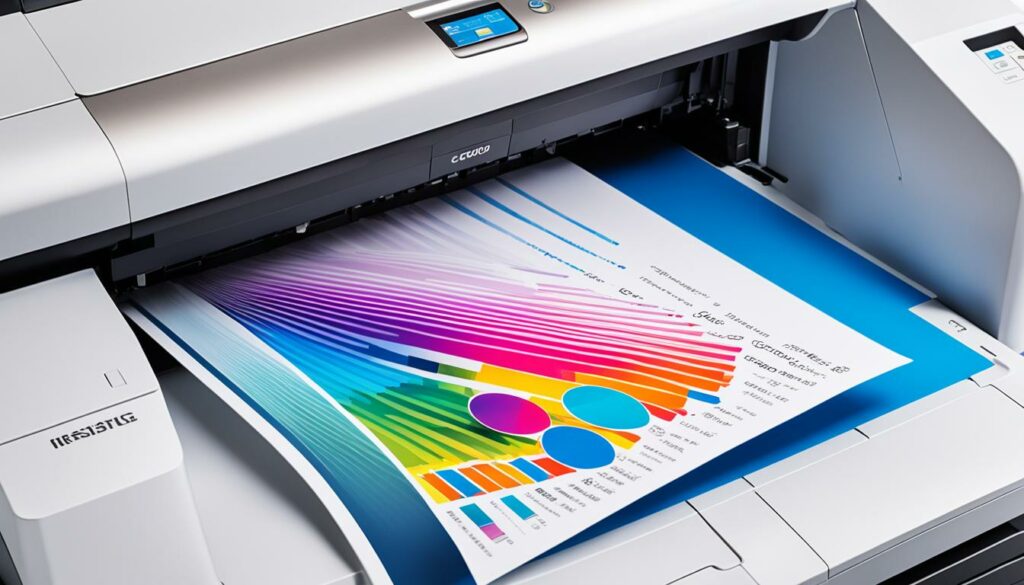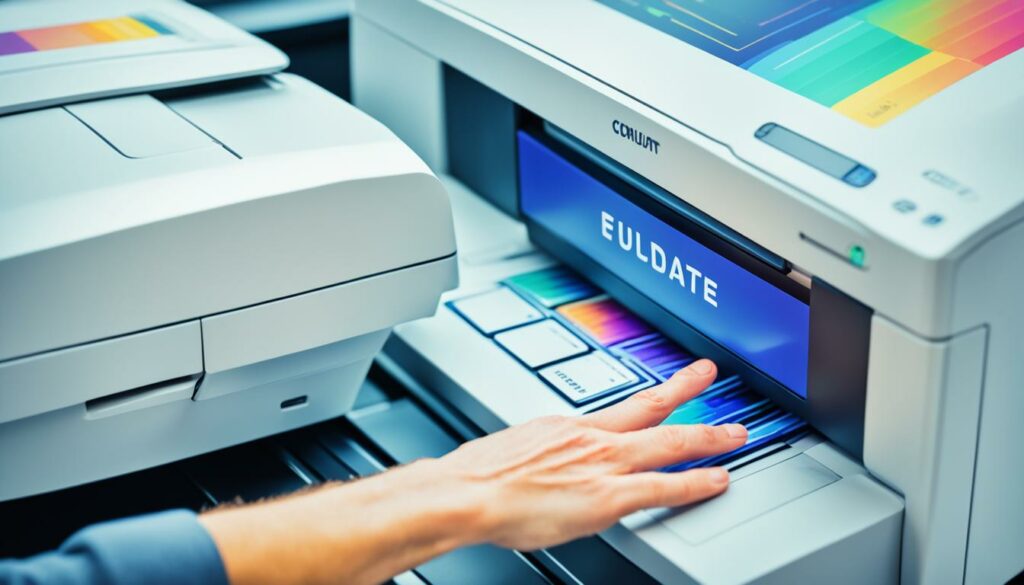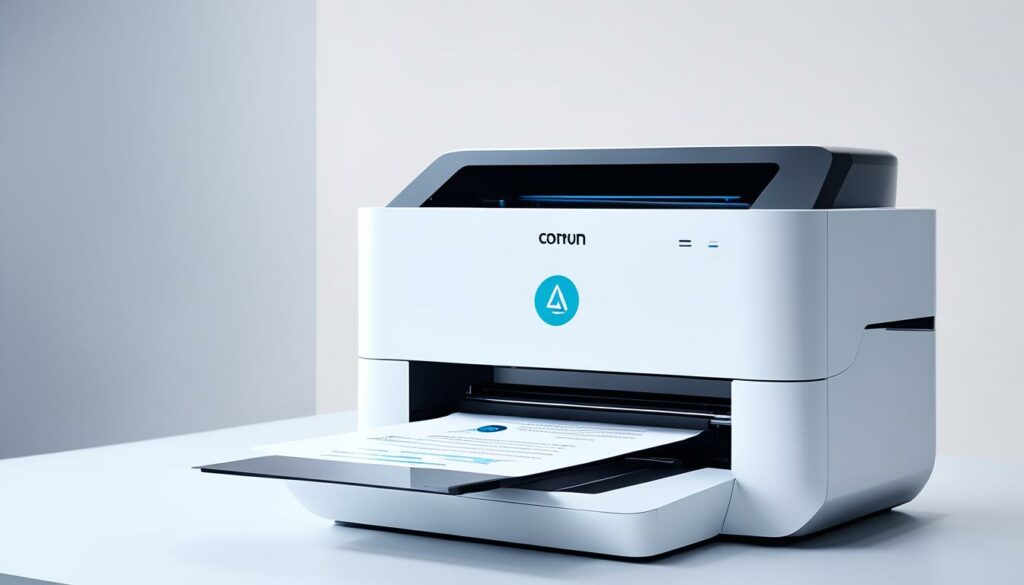Welcome to our comprehensive guide on printer drivers! In this article, we will explore the fascinating world of printer drivers and provide you with a clear understanding of how they work. Whether you’re a novice printer user or an experienced professional, this knowledge will empower you to optimize your printing experience and achieve outstanding results.
Printer drivers play a vital role in facilitating communication between your computer and printer. They act as the middleman, ensuring that your documents are accurately translated into commands that can be understood by your printer. Without printer drivers, it would be impossible for your computer to communicate with the specific model and features of your printer.
So, how exactly do printer drivers work? When you send a print command from your computer, the printer driver takes over and converts the data into a language that your printer can comprehend. It translates the text, images, and formatting elements into a format that the printer’s hardware can interpret, ensuring that your printouts are faithful representations of your digital documents.
To better grasp the intricacies of printer drivers, we will delve into various aspects such as installation, configuration, compatibility, and troubleshooting. By the end of this article, you’ll be equipped with the knowledge to optimize your printer driver settings, resolve common issues, and stay informed about future developments in this dynamic field.
Key Takeaways:
- Printer drivers facilitate communication between your computer and printer.
- They convert your digital documents into a format that the printer can understand and interpret.
- Proper installation and configuration of printer drivers are essential for optimal print results.
- Compatibility issues can occur between printer drivers and operating systems, but they can be resolved.
- Understanding printer driver settings and customization options can help optimize print quality and preferences.
What Are Printer Drivers?
Printer drivers are software programs that serve as a crucial link between your computer and printer. They are specifically designed to facilitate smooth communication and translate the data from your computer into a format that the printer understands.
But what exactly is the purpose of printer drivers and why are they essential?
The purpose of printer drivers can be likened to that of a translator. They ensure that your computer and printer can effectively communicate with each other, enabling you to print documents, photos, and other materials accurately.
Printer drivers perform a range of tasks to facilitate this communication process:
- Translating data: Printer drivers convert the data from your computer into a language that the printer can comprehend. This includes converting text into the appropriate font, managing color profiles, and mapping graphics or images onto the printed page.
- Controlling printer settings: Printer drivers allow you to customize various print settings, such as paper size, orientation, print quality, and media type. These settings ensure that your printouts meet your specific requirements and preferences.
- Managing print queues: Printer drivers help manage print jobs by creating print queues, which prioritize and organize multiple tasks. This ensures efficient printing and prevents conflicts when multiple users send print commands simultaneously.
- Handling error notifications: Printer drivers are responsible for detecting and communicating any errors or issues that may arise during the printing process. They provide error messages and prompts, allowing users to troubleshoot and address problems effectively.
By understanding the definition of printer drivers and their purpose, you can appreciate the integral role they play in achieving optimal print results. Now that you have a comprehensive understanding of what printer drivers are, let’s explore the different types of drivers in the next section.
Types of Printer Drivers
In order to understand the different types of printer drivers, it’s essential to know that a printer driver is a software program that enables your computer to communicate with your printer. Each type of printer driver serves a specific purpose and supports different printer models and operating systems. Let’s explore some of the common types of printer drivers:
1. Proprietary Drivers
Proprietary drivers are developed by printer manufacturers specifically for their own printer models. These drivers are designed to provide optimized performance and compatibility with the respective printers. They often come bundled with the printer installation package and offer advanced features tailored to the specific brand’s hardware.
2. Universal Drivers
Universal drivers, as the name suggests, are designed to work with multiple printer models from various manufacturers. These drivers offer compatibility across a range of printers, making it convenient for users who work with multiple devices or frequently switch printers. While universal drivers provide broad compatibility, they may have limited access to advanced features or specific optimizations for particular printer models.
3. PostScript Drivers
PostScript drivers are primarily used for high-quality printing and graphic design. PostScript is a page description language that enables precise rendering of complex graphics and fonts. These drivers are commonly used by professionals in industries like printing, publishing, and graphic design.
Aside from understanding the types of printer drivers, it’s also crucial to be familiar with common printer driver formats. These formats dictate how the driver processes and sends print data to the printer. Here are a few examples:
PCL (Printer Command Language): PCL is a widely used printer driver format that was developed by Hewlett-Packard. It provides a standardized way of communicating print data to HP printers and many other printer models.
ESC/P (Epson Standard Code for Printers): ESC/P is a printer control language developed by Epson. It is primarily used for Epson printers and supports features specific to Epson’s printing technology.
GDI (Graphical Device Interface): GDI is a driver format used by Microsoft Windows operating systems. It enables Windows-based computers to communicate with printers and other graphical output devices.
Understanding the different types of printer drivers and common driver formats can help you make informed decisions when selecting the most suitable driver for your printing needs. Whether you prioritize performance, compatibility, or specific features, there is a printer driver out there to meet your requirements.
| Type of Printer Driver | Main Characteristics |
|---|---|
| Proprietary Drivers | Developed by printer manufacturers for specific printer models, optimized performance and compatibility, bundled with printer installation package. |
| Universal Drivers | Compatible with multiple printer models from various manufacturers, convenient for users with multiple devices, may have limited access to advanced features. |
| PostScript Drivers | Used for high-quality printing and graphic design, precise rendering of complex graphics and fonts. |

By familiarizing yourself with the different types of printer drivers and their accompanying formats, you can ensure seamless communication between your computer and printer, leading to optimal print quality and performance.
Installation and Setup of Printer Drivers
Installing printer drivers and configuring them properly is essential to ensure seamless communication between your computer and your specific printer model. In this section, we will provide step-by-step instructions to guide you through the installation and setup process.
Gather the necessary information
Before installing your printer driver, it’s important to gather the necessary information about your printer model. This includes the make and model of the printer, as well as its connection type (such as USB or network).
Pro Tip: You can find the make and model of your printer on the printer itself or in the user manual. If you’re unsure about the connection type, refer to the manufacturer’s documentation or consult their website for more information.
Download the correct driver
To install the printer driver, you need to download the correct driver software from the manufacturer’s website. Visit the support or downloads section of the manufacturer’s website, search for your printer model, and download the driver that matches your operating system.
Pro Tip: It’s crucial to download the driver that is compatible with your specific operating system (such as Windows or macOS) and printer model. Using an incorrect driver may result in compatibility issues and prevent your printer from functioning properly.
Install the driver
Once you’ve downloaded the driver software, locate the downloaded file and double-click on it to begin the installation process. Follow the on-screen instructions provided by the installation wizard to install the driver on your computer.
Configure the printer driver settings
After successfully installing the printer driver, it’s important to configure the settings according to your specific printer model and printing preferences. Access the printer driver settings by opening the “Printers & Scanners” or “Printers & Devices” section in your computer’s settings.
Pro Tip: Refer to your printer’s user manual or the manufacturer’s website for detailed instructions on accessing and modifying the printer driver settings. This will allow you to customize options such as paper size, print quality, and orientation to achieve optimal printing results.
Test and verify the setup
Before you start using your printer, it’s crucial to test and verify the setup. Print a test page or any document to ensure that the printer is functioning correctly and producing the desired output.
| Step | Action |
|---|---|
| 1 | Open a document or image you want to print. |
| 2 | Select “Print” from the application’s menu or press Ctrl + P. |
| 3 | Choose your printer from the list of available printers. |
| 4 | Adjust the print settings, if necessary. |
| 5 | Click on the “Print” button to start the printing process. |
| 6 | Verify that the printed document matches your expectations. |
By following these steps, you can easily install printer drivers and configure them to work seamlessly with your specific printer model. Remember to refer to the manufacturer’s documentation or support resources for any specific instructions related to your printer model.

How Printer Drivers Interact with Operating Systems
In order to understand the compatibility issues that can arise between printer drivers and operating systems, it is important to explore how these two components interact with each other.
Printer drivers play a crucial role in establishing communication between your computer and the printer. They act as a bridge, translating the commands from the operating system into a language that the printer can understand and execute. This allows you to send print jobs from your computer to the printer seamlessly.
However, due to the diverse range of operating systems available, compatibility issues can sometimes arise. Different operating systems have their own unique architectures, driver frameworks, and printing protocols. This can lead to difficulties in finding the right printer driver that is compatible with your specific operating system.
To address these compatibility issues, printer manufacturers often provide drivers that are specifically designed for popular operating systems such as Windows, macOS, and Linux. These drivers are optimized to work seamlessly with the respective operating systems and ensure smooth printing experiences.
It is crucial to select the correct printer driver that matches your operating system to achieve optimal performance and functionality. Using the wrong driver can result in print errors, slow printing speeds, or even complete incompatibility with your operating system.
To help you navigate compatibility issues, here are some tips to consider:
- Check the official website of the printer manufacturer for downloadable drivers that are compatible with your operating system.
- Ensure that you are downloading the latest version of the driver to benefit from bug fixes and performance improvements.
- Verify the compatibility of the driver with your specific printer model and the version of the operating system you are using.
- If you are using an older operating system, make sure to check for driver availability as some manufacturers may discontinue support for outdated systems.
- Consult the user manual or online resources provided by the printer manufacturer for troubleshooting steps if you encounter compatibility issues.
By following these tips, you can minimize compatibility issues between printer drivers and operating systems, ensuring a seamless printing experience.

Example Table: Printer Driver Compatibility with Operating Systems
| Operating System | Compatible Printer Drivers |
|---|---|
| Windows 10 | Manufacturer-provided drivers, Windows Update drivers |
| macOS Big Sur | Manufacturer-provided drivers, Apple Software Update drivers |
| Linux (Ubuntu) | Open-source drivers, Manufacturer-provided proprietary drivers |
Customizing Printer Driver Settings
Customizing printer driver settings allows you to optimize the print quality, paper size, orientation, and various other print-specific preferences. By understanding and tweaking these settings, you can achieve the best possible results for your printing needs.
Let’s explore some of the key printer driver settings that you can customize:
1. Print Quality
One of the most important settings to optimize is the print quality. Depending on your printer, you may have options such as draft, normal, and high quality. Choosing the appropriate print quality setting ensures the desired sharpness and clarity for your documents or images.
2. Paper Size and Orientation
Adjusting the paper size and orientation settings is essential to ensure that your prints fit perfectly on the chosen paper type. Whether you’re printing on letter-size, legal-size, or custom-sized paper, selecting the correct paper size in the printer driver settings is crucial. Additionally, you can adjust the orientation settings to determine whether your print should be in portrait or landscape mode.
3. Color Management
Color management settings allow you to control how colors are rendered in your prints. Depending on your requirements, you can choose color modes such as RGB or CMYK, adjust color saturation, and select profiles for specific paper types or print jobs. Fine-tuning these settings can result in vibrant, accurate colors in your prints.
4. Duplex Printing
If your printer supports duplex printing (printing on both sides of the paper), you can enable this feature through the printer driver settings. This can save paper and reduce printing costs, especially for longer documents or presentations.
5. Advanced Options
Printer driver settings often include advanced options that allow for further customization. These options may include settings for print density, contrast, toner save mode, and more. Exploring these advanced settings can help you fine-tune your prints based on your specific requirements.
Remember, every printer model may have slightly different driver settings and customization options. It’s recommended to consult your printer’s user manual or manufacturer’s website for detailed instructions on customizing printer driver settings specific to your printer model.

| Printer Driver Setting | Description |
|---|---|
| Print Quality | Adjusts the sharpness and clarity of your prints. |
| Paper Size and Orientation | Determines the size and orientation of your prints, ensuring they fit correctly on the chosen paper. |
| Color Management | Controls how colors are rendered in your prints for accurate and vibrant results. |
| Duplex Printing | Enables printing on both sides of the paper to save paper and reduce costs. |
| Advanced Options | Provides further customization options, such as print density, contrast, and toner save mode. |
Updating and Maintaining Printer Drivers
In order to ensure smooth compatibility with new software updates and maintain optimal performance, updating and maintaining your printer drivers is essential. Follow the steps below to keep your printer drivers up to date and avoid potential issues:
- Check for manufacturer updates: Visit the official website of your printer’s manufacturer to find the latest driver updates. Look for a dedicated support or downloads section where you can search for your specific printer model and download the updated driver software.
- Automatic driver updates: Some operating systems offer automatic driver update features. Enable this feature, if available, to automatically receive the latest driver updates for your printer. This will save you the hassle of manually searching and installing updates.
- Uninstall old driver versions: Before installing a new printer driver, it’s important to uninstall any previous driver versions. This ensures a clean installation and reduces the chances of driver conflicts.
- Restart your computer: After installing or updating printer drivers, restart your computer. This allows the changes to take effect and ensures that the new driver is properly integrated with your operating system.
Regular maintenance of your printer drivers can help prevent performance problems and ensure that your printer is functioning optimally. Here are some best practices for maintaining your printer drivers:
- Remove unused print drivers: If you have multiple printer drivers installed on your computer for different printer models, consider removing the ones you no longer need. This can help declutter your system and reduce the chances of driver conflicts.
- Regularly check for updates: Make it a habit to periodically check for updates from your printer’s manufacturer. This ensures that you’re using the latest driver versions with improved compatibility and performance.
- Backup your printer drivers: It’s a good practice to back up your printer drivers in case you need to reinstall them in the future. This can save you time and effort if you encounter any driver-related issues or if you switch to a new computer.
- Monitor printer performance: Keep an eye on your printer’s performance and print quality. If you notice any issues or a decline in print quality, updating or reinstalling your printer drivers may help resolve the problem.
By staying proactive and ensuring your printer drivers are up to date, you can enjoy consistent and high-quality printing experiences. Regular maintenance will help optimize the performance of your printer and minimize the chances of encountering driver-related issues.
| Benefits of Updating and Maintaining Printer Drivers | Effective printer communication with your computer | Improved print quality and performance | Reduction in printing errors and issues |
|---|---|---|---|
| Primary Action | Enables smooth compatibility | Optimizes printer performance | Prevents printing errors |
| Secondary Action | Enhances printer features and functionality | Addresses connectivity problems | Improves overall printing experience |

Regularly updating and maintaining your printer drivers is crucial for achieving optimal print results and avoiding compatibility issues. With the latest driver versions, your printer can communicate seamlessly with your computer, leading to improved print quality and performance. Follow the best practices mentioned above to ensure your printer drivers stay up to date and functioning efficiently.
Troubleshooting Printer Driver Problems
If you’re experiencing printer driver issues, you’re not alone. Many users encounter common printer driver errors that can hinder the printing process. In this section, we will address these problems and provide troubleshooting tips to help you resolve them effectively.
1. Driver Conflicts
One of the most common printer driver issues is driver conflicts. This occurs when multiple printer drivers are installed on your computer, causing conflicts and preventing your printer from functioning correctly. To resolve this issue, follow these steps:
- Open the Control Panel or Settings on your computer.
- Navigate to the Printers or Devices section.
- Locate your printer and right-click on it.
- Select “Remove device” or “Uninstall” to remove the conflicting driver.
- Restart your computer and reinstall the correct printer driver from the manufacturer’s website.
2. Printing Errors
Printing errors can occur due to various reasons, such as outdated drivers, incompatible software, or corrupted print files. To troubleshoot printing errors, try the following:
- Ensure that your printer driver is up to date. Visit the manufacturer’s website to download the latest driver version.
- Check for software updates on your computer and install any available updates.
- If possible, try printing from a different application to determine if the issue is specific to one program.
- Restart your printer and computer to refresh the connection.
3. Connectivity Issues
If you’re encountering connectivity issues between your computer and printer, follow these troubleshooting steps:
- Check the physical connections between the printer and computer. Ensure that the cables are securely connected.
- Restart both your printer and computer.
- Try connecting your printer to a different USB port or using a different USB cable.
- Update the network drivers on your computer if you’re using a network printer.
- If using a wireless printer, ensure that it is connected to the correct Wi-Fi network and has a stable connection.
- Reset the printer settings to default and reconfigure the connection.
If these troubleshooting steps do not resolve your printer driver problems, consider seeking assistance from the printer manufacturer’s support or contacting a professional technician.
Remember, understanding common printer driver errors and knowing how to troubleshoot them can save you time and frustration when encountering printing issues.
| Common Printer Driver Problems | Troubleshooting Tips |
|---|---|
| Driver Conflicts | Remove conflicting drivers and reinstall the correct driver from the manufacturer’s website. |
| Printing Errors | Update the printer driver, check for software updates, and try printing from a different application. |
| Connectivity Issues | Check physical connections, restart printer and computer, try different USB ports/cables, update network drivers, and reset printer settings. |

The Future of Printer Drivers
As technology continues to advance at a rapid pace, so do the possibilities for future developments in printer drivers. With advancements in print technology on the horizon, printer drivers are poised to play an even more significant role in ensuring optimal printing experiences.
One of the key areas of future development lies in cloud-based printing. With the increasing popularity of cloud storage and document management solutions, printer drivers are expected to seamlessly integrate with these platforms. This integration will allow users to print files directly from the cloud, eliminating the need for local file transfers.
Furthermore, advancements in print technology itself will also shape the future of printer drivers. As printers become more sophisticated and capable of delivering higher print quality, printer drivers will evolve to accommodate these advancements. They will include advanced color management algorithms, print optimization features, and enhanced compatibility with different file formats.
Another area that holds potential for future developments in printer drivers is changes in driver architecture. Currently, printer drivers rely on a monolithic architecture, which can sometimes result in compatibility issues or performance limitations. However, future printer drivers could adopt a modular architecture, allowing for greater flexibility and scalability. This modular approach would enable manufacturers to easily update and customize specific components of the driver without affecting the entire system.
Impact on User Experience
These future developments in printer drivers will have a direct impact on user experience. Cloud-based printing will offer greater convenience and flexibility, allowing users to print documents from any device and location. Additionally, advancements in print technology and driver architecture will result in improved print quality, faster printing speeds, and enhanced overall performance.
Moreover, the seamless integration of printer drivers with cloud platforms will simplify workflows and streamline document management processes. Users will have the ability to print directly from their preferred cloud storage services, eliminating the need to download files locally before printing.
“The future of printer drivers holds exciting possibilities for both businesses and individuals. With advancements in print technology and cloud-based printing, users can expect a seamless printing experience that is tailored to their specific needs.”
In conclusion, the future of printer drivers is bright and promising. Future developments in print technology, cloud-based printing, and driver architecture will revolutionize the way we interact with printers. These advancements will enhance user experiences, improve print quality, and streamline document management processes. As we eagerly look forward to the future, printer drivers will continue to evolve to meet the ever-changing demands of the digital age.

Conclusion
Understanding how printer drivers work is essential in ensuring smooth communication between your computer and printer, resulting in flawless prints. By following the information and tips provided in this article, you can optimize your printer drivers and enjoy optimal printing experiences.
Printer drivers play a critical role in facilitating the translation of data from your computer into a language that your printer can understand. They enable you to customize print settings, ensure compatibility with different operating systems, and resolve common printing issues.
Whether you are installing printer drivers for the first time, updating existing drivers, or troubleshooting driver-related problems, it is important to familiarize yourself with the process. Taking the time to configure driver settings, stay updated with the latest versions, and proactively address any issues will help you achieve the best print quality possible.
In conclusion, by delving into the intricacies of printer drivers, you have equipped yourself with the knowledge and tools necessary to make the most of your printing experience. The success of your printer-driver interaction lies in understanding and utilizing the functionalities offered by these drivers. So go ahead, explore the settings, keep your drivers up to date, and enjoy seamless printing with confidence.

Morgan Azhari, the owner of PrinterUpdate.net, is a dedicated expert in the field of printers, leveraging a wealth of experience and education to create a platform that passionately shares insights and solutions.
With a goal to enhance the printer user experience, my vision for the website is to provide valuable content, making a positive impact on individuals navigating the complexities of printers.
